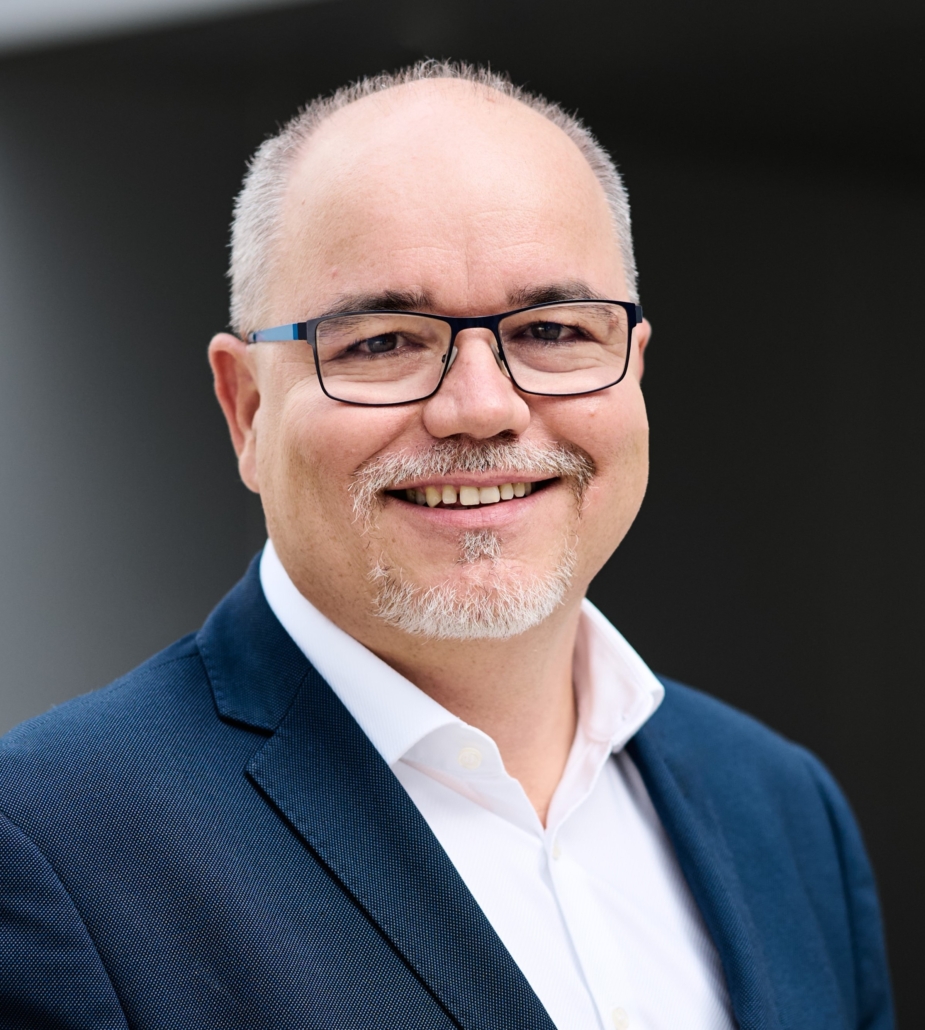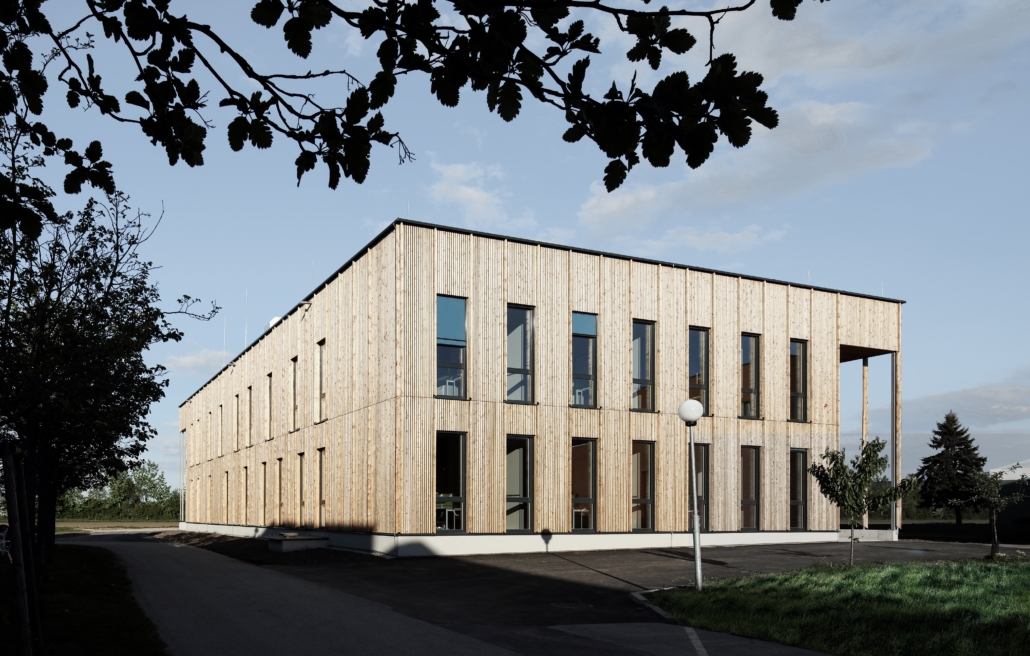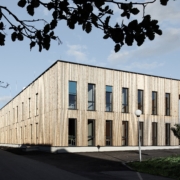Timber frame buildings contribute to the circular economy
Construction industry is facing significant challenges, including a lack of resources and the implementation of strict regulations imposed by the new EU Green Deal regulations. Despite the conservative nature of the industry, DELTA Group’s innovative approach to the use of wood and other sustainable materials demonstrates that a rethink is possible.
However, a successful transformation needs comprehensive changes, which require not only technological innovations but also an adaptation of financing structures and a broader cultural change. DELTA Group is committed to pioneering this change, supported by targeted educational initiatives and strong participation in national and international forums with the aim to control sustainable development. Erik Štefanovič, CEO and co-owner of Delta Group and its representative in the Czech Republic, answered our questions on this topic.
 What are the main challenges the construction industry in Europe is facing today in addition to the increasing emphasis on sustainability?
What are the main challenges the construction industry in Europe is facing today in addition to the increasing emphasis on sustainability?
Construction industry in Europe is facing several challenges: Firstly, there is a significant shortage of resources, both in materials and skilled labor, partly still resulting from the supply chain issues of the pandemic. Secondly, a significant increase in refurbishments from the current 1% to over 3% is required in order to meet the EU Green Deal targets, although the market is taking a wait-and-see approach. Thirdly, there are challenges in implementing regulations such as the CSRD, the EU Taxonomy and the Supply Chain Act. After initial interest, there is now a certain amount of disillusionment about the high level of effort that these regulations entail. Many players are initially concentrating on fulfilling their reporting obligations without taking particular measures for improvement. In addition, existing ambiguities and room for interpretation mean that many stakeholders are adopting the wait-and-see approach in the hope that the requirements may still be adapted.
What is DELTA’s approach to the climate crisis?
DELTA Group is actively engaged in the fight against the climate crisis by integrating six sustainability objectives into each of their projects, which are based on the environmental objectives of the EU taxonomy. These goals are the cornerstones of our sustainability strategy for each individual project and are used to develop key performance indicators to make sustainability measurable and buildings comparable. Our employees receive specific training on all sustainability criteria through our in-house DELTA Academy and are supported in implementing these objectives by an interdisciplinary team of integral consulting experts. We also take on leadership roles and actively participate in working groups in national associations and organizations such as VZI, IG Lebenszyklus Bau and ÖGNI in Austria. As for the Czech Republic, we are in close contact with the Czech Green Building Council (we are actively represented in most working groups), as well as in Slovakia and Ukraine, where DELTA is also active. We are proactively involved in raising awareness and promoting sustainable change in the industry.
The construction industry is responsible for 40% greenhouse gas emissions. What do you think are the realistic reductions achievable by 2050?
It is difficult to set precise reduction targets for greenhouse gas emissions by 2050, as we currently lack precise measurement methods, and many calculations are rather theoretical in nature. It is important to understand that the operation of buildings accounts for 80% of emissions on average but can vary greatly depending on the asset class and life cycle. For the first time, the EU taxonomy provides a clear framework that prevents greenwashing and steers investments towards sustainable projects. Nevertheless, the challenge remains that many players in the construction and real estate industry are hesitant to act and are not yet consistently implementing the necessary steps to reduce emissions.
Which particular steps will lead to the most environmentally friendly construction in your opinion? What do we need to change at first?
The absolute focus here is on minimizing CO2 through highly energy-efficient buildings that are operated with non-fossil energy sources and the reuse of building materials as part of a functioning circular economy. For new buildings in particular, technologies such as seasonal energy storage via geothermal probes can be used to operate buildings CO2-free, which requires higher initial investment but pays off in the long term. When renovating existing buildings, however, holistic solutions that go beyond the boundaries of the individual property and make use of existing synergies in the neighborhood are required. The circular economy is still in its infancy; there is a lack of a broad range of cradle-to-cradle or recyclable products. Manufacturers in particular, but also planners and contractors, must therefore undergo a paradigm shift in order to take this important topic into account in the future.
What is the most effective way to reduce a buildings’ carbon footprint nowadays?
The most effective way to reduce a buildings’ carbon footprint is to use sustainable energy sources for heating and cooling and to increase the energy efficiency of the building envelope. Even in the early planning phases, further optimization potential should be investigated through life cycle assessments and life cycle cost calculations, particularly in the construction. These should then be weighed up in terms of the cost-benefit ratio.
Should we focus on the embodied or operational carbon footprint of buildings?
It is crucial to consider both the embodied carbon footprint and the operational carbon footprint of buildings in order to achieve a comprehensive transformation in the construction and real estate industry. While reducing the operational footprint through more efficient operations often offers the greatest potential savings, considering the embodied carbon footprint is essential in terms of resource conservation and the circular economy. This becomes particularly important when considering that resources such as sand, which are already scarce today, may no longer be available in the future.
Construction industry is a conservative sector where change happens very slowly. Do you foresee more tangible changes in the future?
Although construction is a conservative industry and changes are often slow, the regulations that have already been implemented have triggered important processes. Nevertheless, the current momentum is not sufficient for bringing in fundamental changes. There is hope that this will change when all regulatory instruments are fully implemented, sustainable projects are supported by significantly more favorable financing from banks and an increasing carbon tax no longer allows for alternative options. A broad and serious change in awareness is still required in order to consistently continue towards sustainability. There is currently still a lack of comprehensive incentives for manufacturers, project developers and property owners to invest in sustainable projects. The current subsidies are often too specific and only cover part of the necessary investments. In the long term, only more comprehensive incentives at company level, such as generous tax write-offs, could lead to a more profound change.
 We also find large timber-frame buildings in DELTA Group’s portfolio. What do you see as their main positives and negatives? What is the future building material according to you?
We also find large timber-frame buildings in DELTA Group’s portfolio. What do you see as their main positives and negatives? What is the future building material according to you?
The use of wood in buildings offers significant advantages, in particular due to its low CO2 footprint, high modularity and flexibility in the life cycle. Timber-frame buildings allow materials to be reused or returned to nature without ending up as hazardous waste. They also offer excellent indoor air quality and contribute to a pleasant atmosphere. However, global wood resources are limited and the extensive use of wood as a building material depends heavily on the asset class, national building regulations and the planned utilization concept. The market maturity and cost neutrality of alternatives such as CO2-reduced concrete and reusable building materials and elements will still take some time. In order to support the principles of the circular economy, buildings must be designed in such a way that they can be flexibly redesigned for different uses or easily dismantled at the end of their useful life and the materials recycled or reused. This also requires systematic cataloging of all building materials in a digital construction material passport, ideally from a BIM model, to efficiently manage and use information for reuse.
Red.
Photo: DELTA Group Archive
A complex of six administrative buildings for 200 employees with facades of larch wood. Klimaaktiv Standard building certification. Photo: Christian Brandstätter
 Erik Štefanovič, Managing Director and co-owner of the DELTA Group, is the key figure in the DELTA Group. He is known for his commitment to sustainability in the construction industry, which he actively promotes in all the company’s construction projects. Under his leadership, DELTA Group focuses on incorporating environmentally friendly solutions and elements of sustainable construction, thus contributing to responsibility towards the environment and future generations. This approach is supported by integrated consulting, which he promotes as an essential part of comprehensive project planning. He is also a confirmed supporter of innovation and modern technologies such as BIM and digitization of construction processes. Erik‘s motto ‚look for the solution instead of the culprit‘ illustrates his proactive and open approach to all challenges.
Erik Štefanovič, Managing Director and co-owner of the DELTA Group, is the key figure in the DELTA Group. He is known for his commitment to sustainability in the construction industry, which he actively promotes in all the company’s construction projects. Under his leadership, DELTA Group focuses on incorporating environmentally friendly solutions and elements of sustainable construction, thus contributing to responsibility towards the environment and future generations. This approach is supported by integrated consulting, which he promotes as an essential part of comprehensive project planning. He is also a confirmed supporter of innovation and modern technologies such as BIM and digitization of construction processes. Erik‘s motto ‚look for the solution instead of the culprit‘ illustrates his proactive and open approach to all challenges.




Leave a Reply
Want to join the discussion?Feel free to contribute!